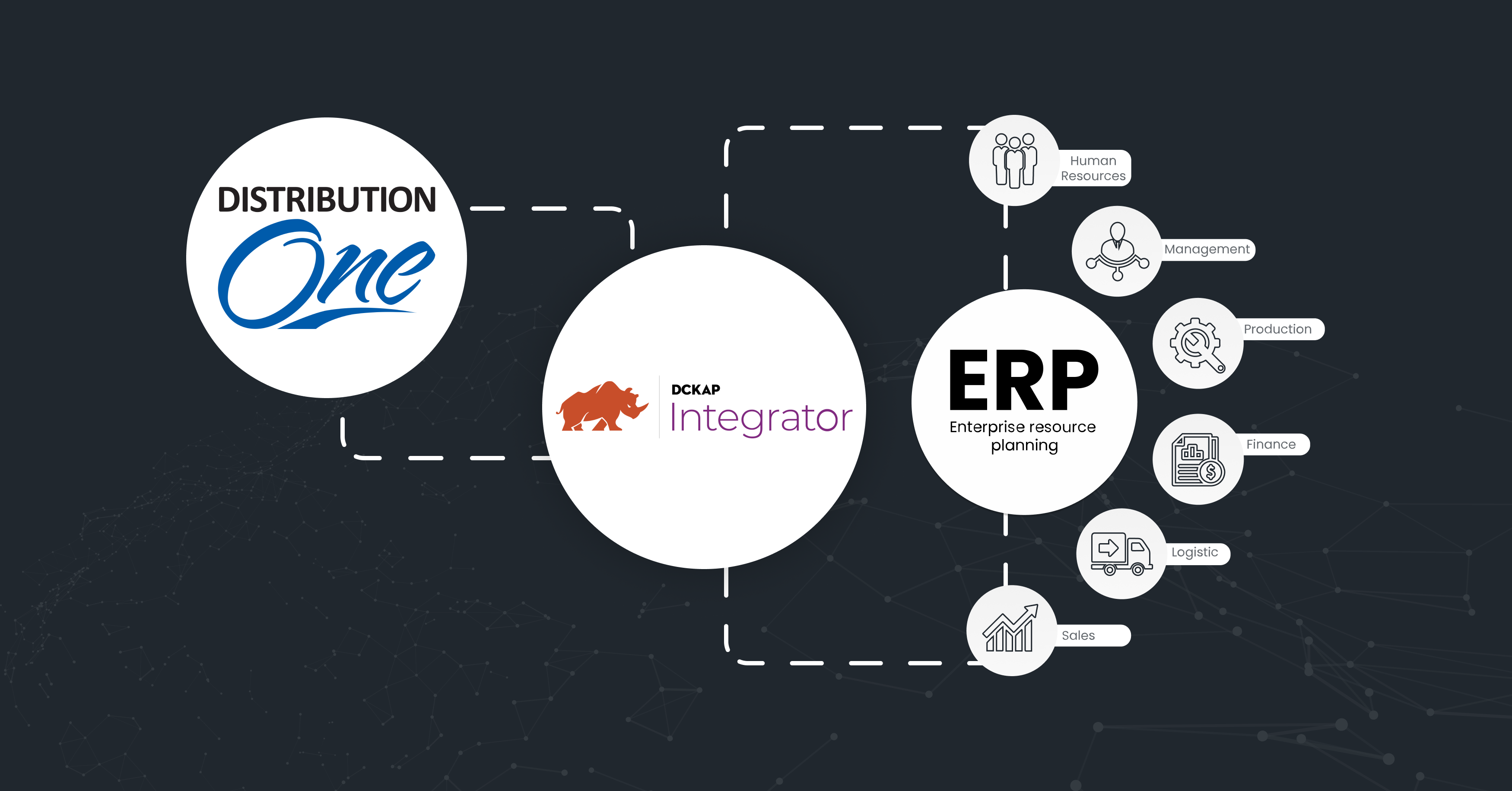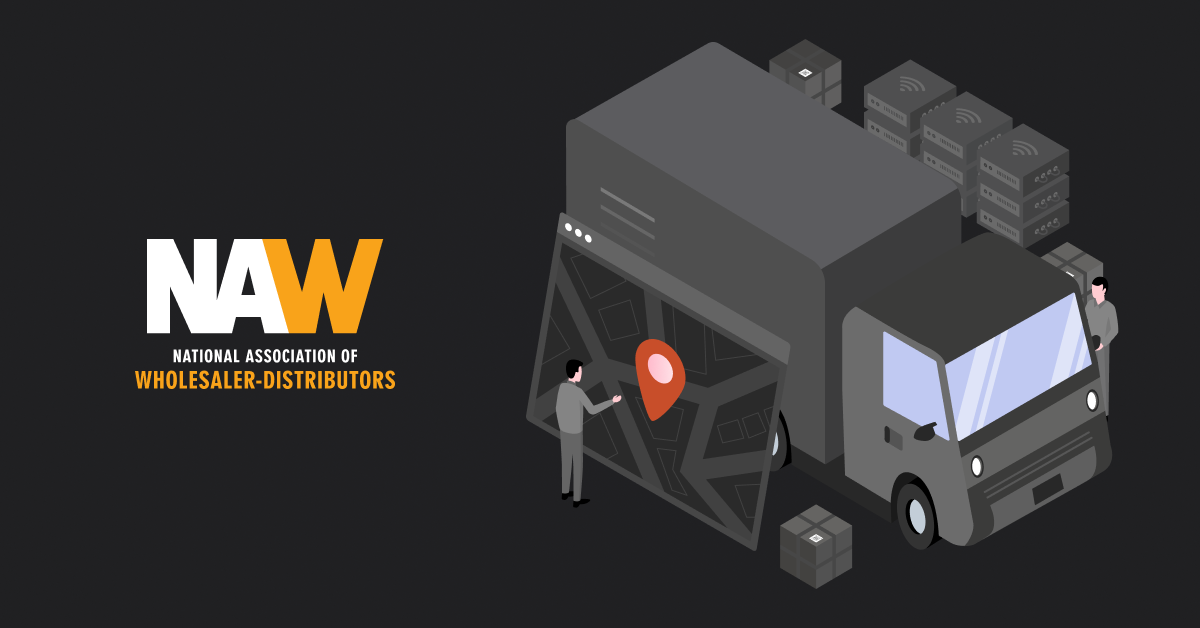The title is a bit of an oversimplification, but that is what it comes down to.
We are, and have been, in a phase of rapid changes and fluctuations, particularly with how customers shop and how businesses can cater to that best – both within and outwards. If you’re a distributor, you know this first hand.

Managing your store efficiently has never been more important. Even more so, as an increasing number of companies take to expanding their commerce online, and for good reason: Statistica estimates that by 2023, 17% of B2B sales would happen online.
Distribution in 2022 doesn’t have to be complex. With a few upgrades, companies can cut down on excessive spending and missed opportunities to pave the way for boosted profitability. There are seven ways they can achieve this: with each focusing on two categories: the business and the people. Though closely related, the former concerns how the operations of the business can be simplified, while the latter offers ways in which you can help the people associated with your business: including customers, vendors, and employees.
Steps for your business
1. Know Your Distribution Business

A step so obvious some may even consider it a bit offensive to state outright. Yet, as your organization and its operations expand, it gets easier to miss the nooks and crannies while observing the bird’s eye view.
Decision-makers in the organization must have a keen sense of awareness regarding how the business is functioning, tools that are in use, assigning resources (especially of the human kind), investment of time, and more.
Not only is this important on a day-to-day basis, but an active cognizance of the organization will also help decisions to be made in a more informed manner. And in the event of trouble-shooting or even a system overhaul, navigating your way through becomes much easier without unwanted surprises.
A great way of improving transparency in your organization would be to document as much as possible – these records can help ensure that no matter how many individuals may be involved in key aspects of your organization, there is a reliable means of accessing critical information.
2. Review Your eCommerce
We’ve already covered why being online is a necessity for distributors seeking to stay relevant and make the most of the opportunities that digital commerce can provide. Goes without saying then that the way you’re presented online can make all the difference when it comes to ensuring a customer trusts your brand for that first all-important purchase and then comes back for more.
The heart of the digital commerce experience is your platform. Depending on your budget, goals, and the talent within your organization, there are several options available in the marketplace, some of the most popular for distributors include Adobe Commerce (prev. Magento), BigCommerce, and Shopify.
Beyond the platform, there are several considerations that come into play when it comes to finalizing your eCommerce, its design and the shopping experience you want to provide, SEO (Search Engine Optimization), legalities and compliances, and more. In this case, you can rely on third parties such as freelancers or development companies to make your vision come to light in an optimal fashion (it’d be remiss for me to not mention that we’re definitely a viable option in that regard as well).
Related: All You Need To Know About Payment Gateways
3. Plan Ahead Using Data
Data is the black gold of the digital age, and understandably so. It’s concrete proof that points the way towards productive actions, whether you’re increasing your customer base or looking to optimize how your organization operates.
Experience is an excellent reinforcement, but more often than not data would help you paint the clearest picture of what’s happening. According to Gartner, by 2025, 60% of B2B sales organizations will transition to a more data-driven approach to selling.
Accurate data can help get a clear picture of the best and worst-performing products, cycles, and seasons most conducive to higher sales, customer behavior, the performance of marketing and advertising initiatives, and more. Predictive analysis can take this a step further by running the numbers one step ahead and projecting such data for future quarters, helping you strategize more efficiently.
If dealing with that quantum of data makes you uneasy, then what you’re looking for is a tool that can help visualize these patterns well, while also integrating with other systems to prepare charts, graphs, and heatmaps to make this business intelligence more accessible and easier to understand. Examples of such tools include Glew.io, Woopra, and DCKAP Analytics.
4. Keep An Eye On Industry Trends
As brand new challenges enter the everyday workings of organizations, so too do innovative responses to them. Nearly all the solutions listed above and below are a result of the identification of a common hurdle holding businesses back, and an attempt to circumvent the damage they cause using technology.
These are by no means the last of the solutions to be seen. The spirit of innovation will continue to ensure that the industry is offered technological cheat codes to avoid costly hurdles and improve how you run and get returns from your business.
Trends such as Headless eCommerce may not fit all companies but for those that do, they can prove to be just what was required to stay ahead of the competition. Hence, keeping in touch with industry trends can go a long way towards finding a suitable solution for you, right as you might need it. You can achieve this by subscribing to industry-specific publications and social media, attending events and expos, and participating in industry forums and chambers.
Also read: The Future of Industrial Distribution: Identifying Key Challenges and Trends
Measures for people

5. Relook at your ERP
It can’t be overstated how important it is to have an ERP (Enterprise Resource Planning) tool that keeps up with your business. The market has its fair share of tools across preferred budgets, architecture, and add-ons, and it can prove to be a powerful addition to your organizational arsenal, helping teams efficiently manage accounting, inventory, human resources, supply chain, and more.
However, as the market evolves and customers demand more and better, just having the ERP is often not enough. This is because while ERP tools handle their own tasks well enough, teams are still required to manage them in tandem with many other operations that work to keep the business running: including the CRM (Customer Relationship Management), eCommerce, and EDI (Electronic Data Interchange).
Imagine having to manually keep track of, update, and manage these tools. Add to that the expense of time, effort and the increased possibility of gaps and human error – all of which add up, in the long run, to really impact the business. So what can be done?
ERP Integration.
Through the use of solutions such as an ERP Integration iPaaS (integration Platform as a Service), you can sync various business applications to your ERP. With all these apps talking to each other, a ton of essential information can be accessed from just one place. With the increased transparency they provide, decision-makers are better equipped to dismantle organizational silos and make certain that the information with every team is its latest version.
Great options for distributors seeking to integrate their ERP include Dell Boomi, Celigo, and DCKAP Integrator.
Suggested: Integrated Channels for Client Acquisition: How ERP Integration Amplifies Omnichannel Experience
6. Cut Down On The Mundane: Automate Instead
The more clarity you have on the daily goings-on in your business, the more likely you are to find areas that can be improved upon. A low-hanging fruit in this regard is the mundane, repetitive processes your teams have probably come to dislike by now such as updating tasks, spreadsheet management, data entry, and similar sigh-inducing, though important processes.
The worst part? The boredom associated with it isn’t their worst quality. These are also very time-consuming, create an added possibility of human error, and can actively contribute to employee dissatisfaction.
Take product content for example. Often managed via spreadsheets, updating the content in the relevant documents, then updating the various channels you’re selling at can get taxing over time. Errors such as duplicate content, incorrect or outdated details, or mismatched images can go as far as ruining the purchasing experience for your customer and lead to increased returned goods.
The good news is that for most such processes, there are options to automate today. There are plenty of tech solutions in this digital age, from inventory management to marketing, and more.
In the aforementioned example, an easy solution is to get a PIM (Product Information Management) tool. Acting as centralized storage for product information such as descriptions, images, videos, and more, the PIM enables the automatic maintenance of internal records as well as various channels – both online and offline — to ensure the entire organization is on the same page without excessive intervention from employees. For distributors, good options for PIM tools include Akeneo, Plytix, and DCKAP PIM.
More: ERP integraton platform for the Manufacturing Industry
7. Vendor Selection The Smart Way
There are times when you’ll need to reach outside of your organization for solutions, and the market has vendors for most major hurdles that you might face. There is a lot that hinges upon ensuring you have the right vendor(s) on board, so it definitely helps to scrutinize the vendor selection process carefully:
- Doing your homework pays. Match what the potential vendor offers to not just your immediate requirement, but map them against KPIs that you expect delivery upon against the allotted budget for them. This will allow for a more objective approach to finding the right vendor.
- If you’re clear, they’ll have clarity as well. Prior to bringing vendors on board, ensure those interacting with them are able to provide the information and details they would need to best do their jobs. The last reason you’d like for a vendor to be unable to deliver is because of incomplete or incorrect information shared with an otherwise capable team.
- Don’t bite more than you can chew. In an ideal world, working with the ideal partner would need minimal interference from either party. Yet there is the likelihood that employees would need to make time to interact with the vendors, particularly at the start of the association. Signing up vendors that best match your requirements would be a great means of ensuring that less time is spent managing them. Bringing on board fewer vendors would also help in this regard.
- Opt for business partners over vendors. While not always an option, try and find vendors who are invested in your business beyond merely their offering. Especially for problems that might require longer associations with the vendor, it would be best to bring on board one that would match the expectations and sentiments of your own team.
If you’ve made it here, it may seem like the title was misleading. Solutions, tips, suggestions, and process changes don’t seem the most simple after all. These are measures that may require effort at the initial stages, but will also reward those efforts with saved time and effort and improved customer & employee satisfaction. They will also help your business identify and leverage opportunities and better anticipate and mitigate threats and key challenges faced by industrial distributors.
Contents




